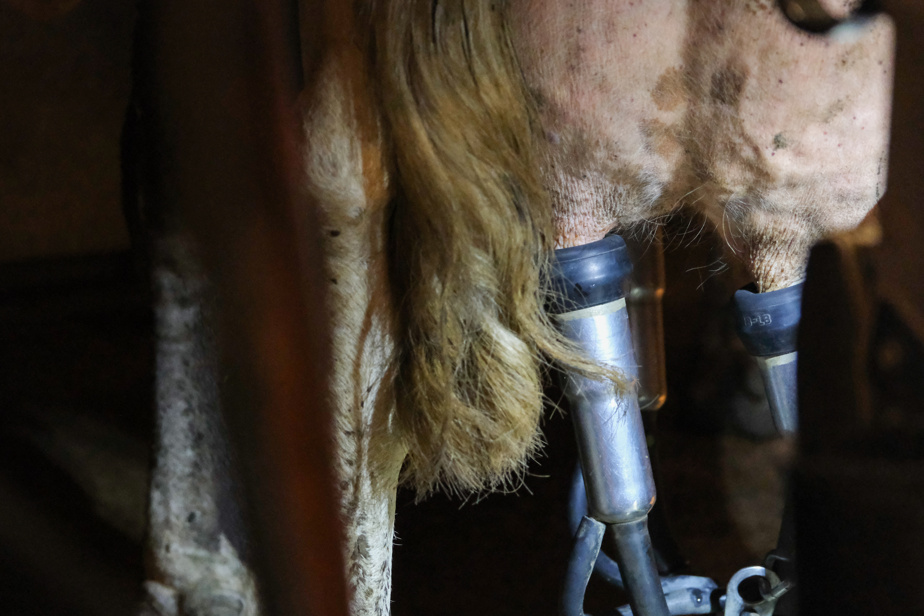Since last winter, H5N1 bird flu has been spreading through American cow herds. Alarming many epidemiologists, this development could lead to another human pandemic. Biologists are scrambling to determine the extent of the danger.
The mammary glands
Shortly after the 2009 H1N1 pandemic, Alyson Kelvin was struck by the fact that pregnant women and their babies were twice as likely to have severe versions of the infection. The University of Saskatchewan biologist discovered that the virus accumulated in the mammary glands of ferrets, a laboratory animal often used to study human respiratory infections. Her findings were published in 2015 in the journal PLoS Pathogens.
“The next step was to see if the virus could be transmitted through milk, or if a virus that infected the mammary glands rather than the respiratory tract could acquire the ability to infect the latter,” says M.me Kelvin. But at the time, there was no funding for studying influenza in the mammary glands. There were very few studies on the subject.”
This area of research suddenly became more interesting with bovine H5N1, because the virus is concentrated in the mammary glands and is thought to be transmitted through milk from one cow to another.me Kelvin, who has since focused his work on vaccines, does not plan to use this windfall to resume his research on influenza in the mammary glands.
The Canadian precedent of the 1950s
Canada was until this year a hotbed of research on influenza in mammary glands. During his work on ferrets, Mme Kelvin found three Agriculture Canada studies from the 1950s on influenza in bovine mammary glands.

PHOTO TAKEN FROM THE UNIVERSITY OF SASKATCHEWAN WEBSITE
Alyson Kelvin, a biologist at the University of Saskatchewan
The goal was to produce a flu vaccine in cow’s milk. As this proved no better than growing the vaccine in eggs, this avenue of research was abandoned.
Alyson Kelvin, a biologist at the University of Saskatchewan
The research in the 1950s was carried out at a federal experimental farm near Hull.
Human and animal vaccines
In early July, the United States announced a contract with Moderna to develop a messenger RNA (mRNA) vaccine for H5N1 influenza. mRNA vaccines have been at the forefront of the fight against COVID-19.
This follows the announcement in late May of the purchase of 4.8 million doses of a traditional H5N1 vaccine, in case bovine H5N1 begins to spread to humans in a more significant way.
In Canada, which has no cases of H5N1 in its cows at this time, the Public Health Agency of Canada has begun discussions with pharmaceutical companies to ensure a rapid purchase if needed.
Finland, meanwhile, has been the most proactive country, announcing in June that it was vaccinating 10,000 workers on mink and fox farms. Last year, outbreaks of bird flu on fur farms forced the culling of 485,000 animals in the Nordic country.
These 10,000 doses are part of a purchase of 40 million doses of H5N1 vaccine by the European Union.

PHOTO TAKEN FROM USDA WEBSITE
As of mid-June, only 18 U.S. dairy farms had accepted USDA funds to purchase protective equipment for their employees.
Vaccinating chickens and cattle is also being considered, but has been stymied by the difficulty of determining whether an animal is infected. Europe is ahead of the curve on this, according to Andrew Van Kessel, director of research at the Vaccination and Infectious Diseases Organization (VIDO) at the University of Saskatchewan.
VIDO is one of the only biosafety laboratories in the world that can study large animals and will soon be testing avian H5N1 inoculation in calves.
The distinction between a vaccinated and infected animal is crucial for export. Some countries vaccinate their chickens against H5N1 flu when they do not export their meat or eggs. This is the case in Mexico, according to Jean-Pierre Vaillancourt, of the faculty of veterinary medicine at the University of Montreal.
Evolution
On July 8, in the journal PNAS, biologists from the University of Wisconsin showed that compared to the H5N1 bird flu, the one present in American cows has more affinity with human respiratory cells.
Is this worrying?
“There is no evidence that this virus is capable of being transmitted easily via aerosol between ferrets,” explains Dr.r Vaillancourt.

PHOTO TAKEN FROM THE UNIVERSITY OF MONTREAL WEBSITE
The Dr Jean-Pierre Vaillancourt, Faculty of Veterinary Medicine, University of Montreal
We see that contamination can be oral and possibly respiratory, under laboratory conditions. In other words, they have demonstrated that it is technically possible by forcing significant doses in a controlled environment. This does not mean that transmission at the respiratory level is possible in a natural environment.
The Dr Jean-Pierre Vaillancourt, Faculty of Veterinary Medicine, University of Montreal
The Dr Vaillancourt notes that since the appearance of this H5N1 avian flu in chicken farms in Asia, hundreds of thousands of people have been in contact with infected birds. “We have still not observed human-to-human transmission. But this study indicates that we must be vigilant, because although the probability is low that it will become a reality, the risk is not negligible.”
Learn more
-
- 140
- Number of cow herds infected with H5N1 in the United States since March
Source: United States Department of Agriculture (USDA)
- 55
- Number of cow herds infected with H5N1 in the United States since the beginning of June
Source: United States Department of Agriculture (USDA)
-
- 4
- Number of human cases linked to bovine H5N1 in the United States
Source: United States Department of Agriculture (USDA)
